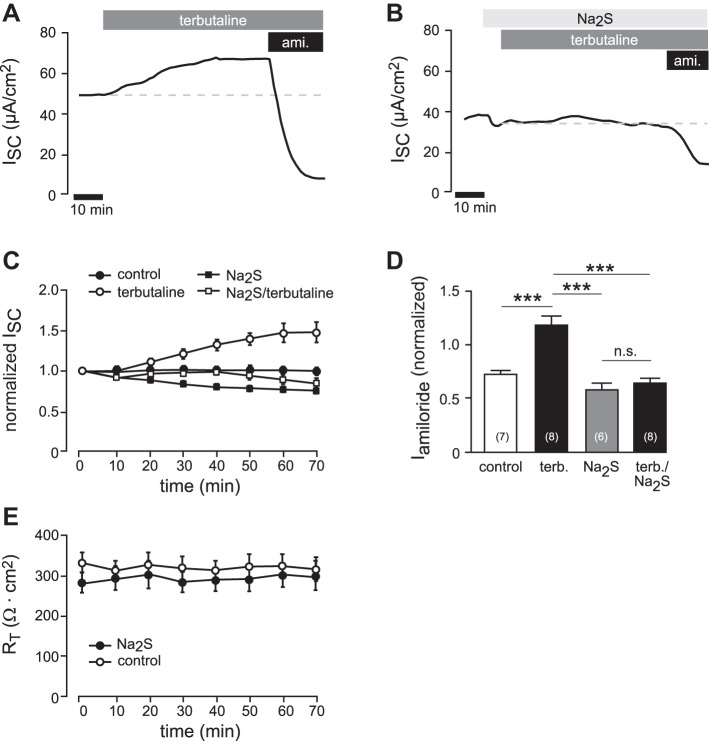Fig. 4.
H2S inhibits β-adrenergic agonist-stimulated sodium transport in native epithelial lung preparations. A: representative current trace of an Ussing chamber experiment on freshly dissected Xenopus laevis lungs. After short-circuit current values (ISC) were stable, terbutaline (3 × 10−4 M) was applied to the basolateral compartment. This resulted in a current increase. After the current stabilized again, amiloride (ami.; 10−5 M) was additionally applied to the apical membrane. B: similar experiment as shown in A. Here, terbutaline was applied in the presence of Na2S (5 × 10−5) in the apical compartment. To avoid loss of H2S due to evaporation from buffers, Na2S was applied every 8 min. Note that in the presence of Na2S, terbutaline was ineffective. C: summary of experiments with the data shown in panels A and B, as well as experiments in which lungs were exposed to Na2S (5 × 10−5) alone or to no drugs at all (control). Depicted are values of ISC, which have been normalized to the ISC value before drug application. D: amiloride-sensitive current fractions (Iamiloride) were normalized to the initial ISC value to compensate variations in baseline transport capacity of different lung preparations. Note that Na2S (5 × 10−5) alone had no significant effect on Iamiloride, whereas the stimulatory effect of terbutaline was lost (one-way ANOVA followed by Tukey's multiple-comparison test). ***P < 0.001. E: transepithelial resistances (RT; Ω cm2) of Xenopus lungs, which were exposed to Na2S (5 × 10−5) or no drugs at all (control). n = numbers in parentheses.

